
Bhatti gate has been my love for many reasons and I am sure that you will also fall for it once you enter this historic gate. This is one of the thirteen gates of the Walled City of Lahore which were built by the Mughal Emperor Akbar the Great. The structure of the gate was changed when the gates were rebuilt during the British Raj and thus its position might have had changed like Delhi Gate Lahore. There are no rooms inside this gate like Lohari or Delhi Gates but half of the portion is occupied by a local police station.
This is not all about the gate; there is a world of treasures hidden inside the narrow winding streets of this gate. You enter into a universe of colors, aroma of enticing food, illustrations of past, music and thousand of feelings reflecting from the age’s old balconies and jharokas. Inside the gate a passage leads straight to Taxali bazaar via Bazaar-e-Hakeeman and Tehseel Bazaar. So all the points seen on this trail and in the adjoining streets are of immense value and you will see high architectural merit buildings en-route.
Bhatti Gate was once such an affluent area that many of the city’s poets, writers and intellectuals lived there. It was considered as a hub of literature and arts. It was Bhatti gate from where Sir Abdul Qadir started the publication of his influential literary magazine ‘Makhzan’ and was first issued from there in 1901. Let me tell you that the initial edition of Makhzan was published with Iqbal’s first natural poem “Hamala”. The famous “Pesa Akhbar” was issued from Bhatti by Munshi Mehboob Alam.
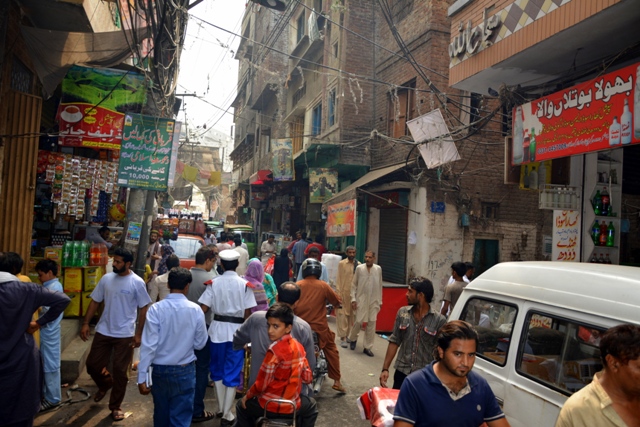
How can I forget to mention here that Allama Iqbal also lived in this gate along with many of the principals and professors of the oriental and Government College Lahore which was at that time located near Taxali Gate. Agha Hashr the famous drama writer, Fasih Ul Mulk and Daag Dehlvi lived here. Chaudhry Sir Shahab Ud Din, the speaker of Punjab Assembly and Punjabi poet, Faqir Syed Azizuddin and Faqir Syed Noor ud din, accomplished Persian poets, famous Marsia orator and poet Syed Nazir Hussain Nazir Lakhnavi and Maulvi Ahmed Din also resided in Bhatti Gate. So now you can imagine the scale of wisdom and intelligence in the air of this gate. Molvi Asghar Rohi, a guide to the knowledge of linguistics lived near Mohallah Patranga and a street named after him still exists there along with the Mosque built by him. We get to know that the eminent lawyers of those times also preferred living inside Bhatti Gate as it was considered as a hub of knowledge. Not to forget that inside the same gate is the shop where the famous Indian singer Rafi worked.
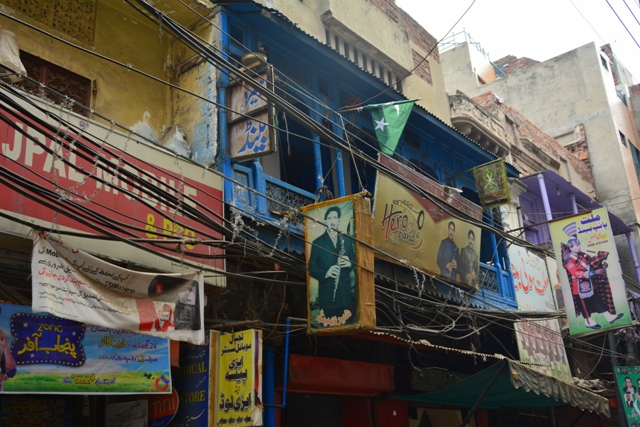
Let me take you to a site you must be astonished at. Opposite Mohallah Jalotiyaan is the house of Allama Iqbal. The house is now converted into the shop of a local music band and no remains of Allama Iqbal are seen except for plaque stating that Iqbal lived there from 1901-1905. All those poems that Iqbal wrote before going to England and later published in “Bang e Dara” were written while he was living there. Thara of Allama Iqbal is also located inside Bhatti Gate where it is said that he would sit with literary people and discuss the day to day and philosophical matters. The barber shop where Allama Iqbal often visited is also nearby the Thara, but unfortunately none of these is preserved. Recently the lawyer living in a house next to thara Allama Iqbal has placed a plaque in the memory of Iqbal, making tourists familiar with it.
Oonchi Masjid built during the reign of Mughal Emperor Akbar is also located inside this gate. Madrassa Nomanai and mosque of Shah Jahan’s period are seen inside Bhatti Gate.

While walking on the Bhatti Gate trail you will come across the Sheesh Mahal Ghatti, where Syed Muhammad Shah lived who was a lawyer and master of property laws in those times. Same is the place where Muhammad Hussain the physician of Viceroy of Lahore lived. There is the street of Mela Raam but his mansion does not exist now. He was an esteemed personality and was one of the contractors who built the Railway Station of Lahore.
What I love the most here is a symbolic Koocha called Moti Tibba. Well you will be awe stunned by its beauty which resembles the picture wall of Lahore Fort. We also see the famous Jogi Mohallah inside Bhatti Gate where Muhammad Tufail lived who was the founder of the famous literary collection Naqoosh. Faqir Khana, a private museum, is also located there. Close to the Museum is the Haveli of Begum Wajid Ali Shah which is still a residential property. Near the same place is the Imam Bargah of Sayeeda Mubarik Begam (wife of Syed Mratab Ali). A part of this haveli is turned into Naqsh School of Arts.
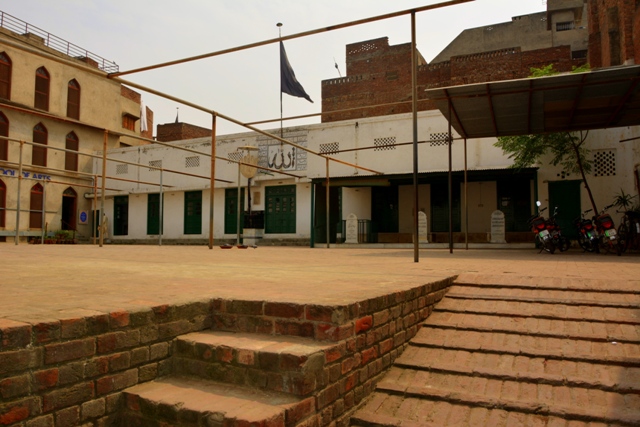
Bazaar e Hakeeman in those days was famous for literary sittings and intellectuals, scholars, poets, and politicians of Lahore such as Molana Muhammad Hassan Jalandhri, Sir Abdulqadir, Allama Iqbal, Sir Shahab Udin, Sir Muhammad Shah Din, Sir Muhammad Shafi, and Faqeer Iftikhar Udin were regular part of those sittings. Near the Koocha Lal Haveli comes the place where the renowned wrestler Muhammad Hassan known as Hassa Pehalwan lived. The mansion of Session Judge Syed Muhammad Latif, who is more famous because of his book “Tareekh e Lahore”, is also inside Bhatti gate and a bazaar is named after him. The Muslim League representing newspaper named “Khalid” was also launched from here. The owner of “Tehzeeb e Niswan” Magazine Syed Mumtaz Ali is also among the big names who lived there, his house was in Koocha Tehseel. Molana Zafar Ali khan lived in Kucha Sabz peer. Famous Urdu poet Saghar Sidiqui also spent his life there. Famous Urdu Fiction writer Ghulam Abbas, Choudhry Barkat Ali, and Nazeer Chaudhry, the editors of literary journals “Adab e Lateef” and “Sawera” lived there. The writer Tahir Lahori also lived in Bhatti Gate.
Did you know that Mian Abdul Rashid Kardar, a resident of Bhatti Gate, made the first silent movie in Lahore and rose to great fame as one of the most successful filmmakers of India? The first theatre Aziz Theatre and cinemas of Lahore “Pakistan Talkies and Tranam Cinema” are in Bhatti. the great singer Ali Bux Zahoor came from Bhatti. The music composer Khawaja Khurshid Anwar was another Bhatti Gate man, along with famous writer Mirza Adeeb.
Bhatti did not only belong to writers, poets and artists, it was the gate to sportsmen. The great wrestlers Rustam-e-Zaman Gama Pehelwan and Rustam-e-Hind Imam Bux, were from Bhatti Gate. The great skipper Abdul Hafiz Kardar, Pakistan’s famous cricket captain also belonged to Bhatti Gate.
An interesting thing inside Bhatti is the Mohallah of Hindus and temples are seen made inside the small houses. This is also a scene of religious harmony as walled city is known for it.
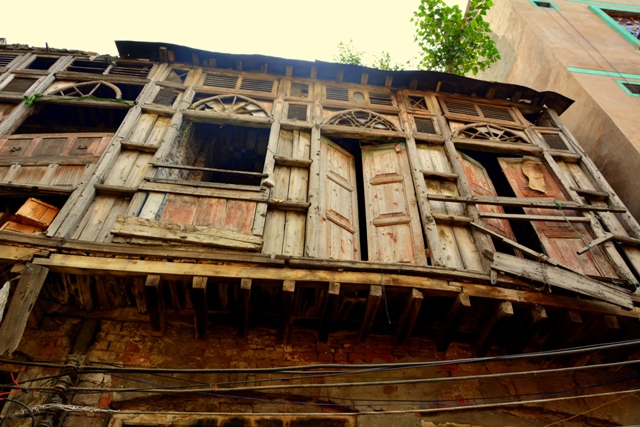
Historic accounts say that Bhatti was one of the two oldest entry points to the Walled City which controlled the north-south thoroughfare during Ghaznavid time. If we talk about the name “Bhatti” Hakeem Ahmed Shuja in his book “Lahore ka Chelsea” mentions that the real name of the gate was Bhutti gate, and it was the point where Bhutti Warriors of Multan camped before the arrival of Mughals. With the passage of time people started calling it “Bhatti”. Some books tell that the gate was the capital of the Emperor Raja Bhatti in ancient times and was named so. Whereas some history reference describes that the name of this gate is also due to the settlement of Bhatti Clan who lived there for centuries are still found there.
I think this place has a great potential for tourists and it should be converted into a tourist trail without any delay. The issue of parking vehicles outside the gate should be resolved so that anyone who wants to visit can access this place easily.
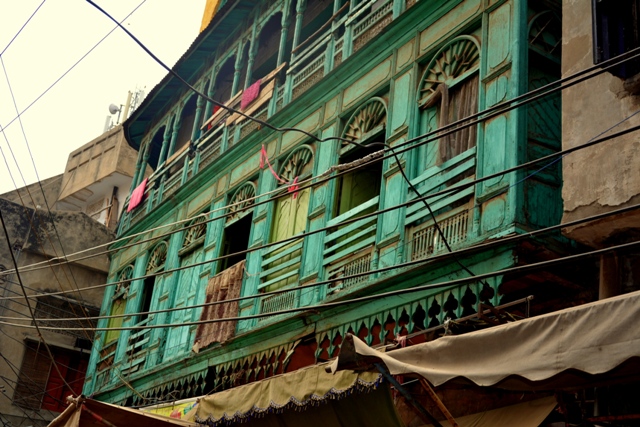
Writer : Tania Qureshi (Historian, Writer, Heritage Analyst)
The writer can be reached on twitter.com/TaniaQureshi
